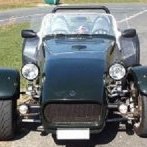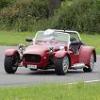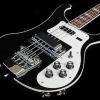One of the difficulties of old race cars and particularly those that are prototypes is that there’s very little information or anything to copy when it comes to some of the technical details.
Shock length was easy enough to calculate from the geometry and there was four old Spax dampers that came with the collection of parts which supposedly were from the car. All good so far but then comes spring selection. I had twice as many springs as there were shocks so little idea as to which were for this car so somehow I needed to work out the spring rates. The obvious way would be to physically test them but as they will need to be replaced and the budget needs reining in a bit I opted for the mathematical route.
Those that know the maths can skip ahead but for those of you that don’t the spring rate is calculated from the following parameters:
L = Free Length of The Unloaded Spring (m)
G = Shear Modulus of Rigidity of Material
d = Wire Diameter (m)
D = Mean Diameter (m)
N = Number of active coils (an active coil sweeps one full circle)
For spring steel the shear modulus would be around 79,300,000,000 Pa and the Mean Diameter = Total Spring Diameter – Wire Diameter
These parameters are then entered into the following formula.
Based on the dimensions of my on springs this gave me spring rates of 83983, 98620, 33196 and 42766 N/m which equates to 478, 562, 189 and 243 lbs/ins in old money.
Now I know the spring rates the next task is to determine which of these were fitted to the car and for this we need to look at the wheel rates and suspension frequency. I won’t type it all out but this guide from Koni is what I’m working from.
The published data for my JW4’s was much better and these had a suspension frequency of 3.5Hz which seems consistent with racing cars so I will stick with this but I’ve had to estimate corner weights for the Costin since the car is nowhere near complete. I’ve taken an educated guess at 85kg for the front wheels and 125kg rear again based on the same F/R bias as the JW4 but allowing a bit more for the heavier engine and chassis.
By way of a comparison I found these figures online for various different types of cars.
0.5-1.0Hz Passenger cars, typical OEM
1.5-2.0Hz Rally Cars
1.5-2.5Hz Non-Aero racecars, moderate downforce Formula cars
2.5-3.5Hz Moderate downforce racecars with up to 50% total weight in max downforce capability
3.5-5.0+Hz High downforce racecars with more than 50% of their weight in max downforce
Plugging the different spring rates into the formula I found the 189lbs/ins springs at the front gave a wheel frequency of 3.6Hz and the same with 240bs/ins on the rear. Conversely the heavier springs would have given a wheel frequency of 5.5Hz so clearly wrong for this car.
So based on these results and what’s available from Faulkner off the shelf I’ll be fitting 175lbs/ins springs to the front and 250lbs/ins on the rear as my starting point.
and that’s how to loose several evenings and not make it look like you’ve done anything 😀



